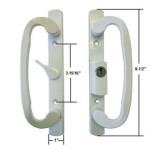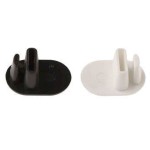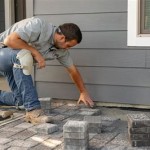How To Finish A Cement Patio
A well-finished cement patio enhances a property's aesthetic appeal and provides a durable, functional outdoor space. Achieving a professional-looking finish requires careful planning and execution. This article outlines the essential steps involved in finishing a cement patio.
Preparation is Key: Before any finishing work begins, the concrete slab must be properly cured. Curing allows the concrete to gain strength and reduces the risk of cracking. The curing period typically lasts between 7 and 28 days, depending on the concrete mix and environmental conditions. During this time, the concrete should be kept moist, often by covering it with plastic sheeting or using a curing compound.
Cleaning the Surface: Once the concrete has cured, the surface must be thoroughly cleaned. This removes any dirt, debris, or curing compound residue that might interfere with the finishing process. A pressure washer is the most effective tool for this task, but a stiff-bristled brush and a concrete cleaner can also be used. Allow the surface to dry completely before proceeding.
Choosing the Right Finish: Several finishing options are available for cement patios, each offering different aesthetic and functional characteristics. These include:
Broom Finish: This is a basic, textured finish created by dragging a broom across the surface of the freshly poured concrete. It offers good slip resistance and is a cost-effective option.
Stamped Concrete: This technique involves pressing decorative patterns into the wet concrete using specialized stamps. It can mimic the appearance of other materials, such as brick, stone, or tile.
Exposed Aggregate Finish: This finish reveals the decorative aggregates within the concrete mix. A surface retarder is applied to the freshly poured concrete, and the top layer is washed away to expose the aggregates.
Stained Concrete: Concrete stains penetrate the surface of the concrete, providing long-lasting color. Acid-based stains react chemically with the concrete to produce a variegated, natural look, while water-based stains offer a wider range of colors and are more environmentally friendly.
Sealed Concrete: Applying a concrete sealer protects the surface from stains, moisture, and UV damage. Sealers are available in various finishes, including gloss, semi-gloss, and matte.
Applying the Chosen Finish: The application process varies depending on the chosen finish. Broom finishing is relatively straightforward, requiring only a broom and some skill. Stamped concrete and exposed aggregate finishes require specialized tools and expertise. Staining and sealing involve applying the chosen product evenly across the surface using a roller, sprayer, or brush.
Broom Finishing Process: Once the concrete reaches the desired consistency, a broom is drawn across the surface in long, straight strokes. The texture of the broom determines the coarseness of the finish.
Stamped Concrete Process: After the concrete is poured and leveled, the stamps are pressed into the surface. Color hardeners and release agents are often used to enhance the appearance and prevent the stamps from sticking.
Exposed Aggregate Finish Process: Following the application of the surface retarder, the top layer of concrete is washed away using a pressure washer or scrubbing brush, revealing the decorative aggregates.
Staining Concrete Surfaces: The concrete surface must be clean and dry before applying the stain. The stain is applied evenly, following the manufacturer's instructions. Multiple coats may be necessary to achieve the desired color intensity.
Sealing the Concrete Patio: After the stain has dried completely, a concrete sealer is applied to protect the surface. The sealer is typically applied in multiple coats, allowing each coat to dry before applying the next.
Tools and Materials: The tools and materials required depend on the chosen finish. Common tools include brooms, trowels, floats, stamps, pressure washers, rollers, brushes, and sprayers. Materials include concrete cleaner, curing compound, stains, sealers, color hardeners, and release agents.
Safety Precautions: Wear appropriate safety gear, including gloves, eye protection, and a dust mask, when working with concrete and finishing products. Follow the manufacturer's instructions carefully for all materials and equipment. Ensure adequate ventilation when working with stains and sealers.
Maintenance: Regular cleaning and maintenance will help to prolong the life of the finished patio. Sweep the patio regularly to remove dirt and debris. Periodically clean the surface with a mild detergent and water. Reapply sealer as needed to maintain protection.
Professional Assistance: While some finishing techniques, like broom finishing, can be tackled by DIY enthusiasts, more complex finishes, such as stamped concrete and exposed aggregate, are best left to professionals. Experienced contractors have the necessary expertise and equipment to ensure a high-quality, long-lasting finish.

How To Form Pour And Finish A Concrete Patio Slab

Types Of Concrete Finishes For Patios 5 Amazing Ideas

How To Finish A Concrete Patio Slab Fine Homebuilding

Concrete Patio And Sidewalk Finishing Techniques How To Finish

How To Create Faux Tile Look On Concrete Patio Southern Hospitality

Concrete Patio Finishes 7 Outdoor Flooring Options Network

3 Concrete Resurfacing Options For Patio

Best Finish To Put On A Concrete Patio

Reasons To Choose A Broom Finish Concrete Patio Cesar S

3 Concrete Resurfacing Options For Patio








